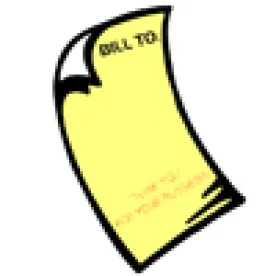Regardless of a patient’s diligence in selecting an in-network hospital, ambulatory surgery center, or other health facility for treatment, patients are still being saddled with surprisingly high medical bills that include out-of-network rates which often dwarf the discounted in-network rates. These “Surprise Bills” occur when a patient receives treatment from an in-network facility but also receives treatment from an out-of-network physician (or other healthcare practitioner)[1] who provides services to in-network facility patients – consider an out-of-network anesthesiology group that is the exclusive physician of anesthesia services at an in-network hospital. Studies show that this and other similar scenarios are frequently played out across the Country.
Research published in The New England Journal of Medicine (“NEJM”) on November 17, 2016, found that more than one in five patients visiting the emergency room may face the specter of surprise billing.[2] The NEJM study looked at billing data from one large national insurer and found that 22% of the time, patients who went to a hospital covered by their plan still received a bill from a doctor who was not in the plan’s network. The average such bill cost more than $900, though there was a wide range; the highest was for more than $19,000.
States Taking Action – New York and Florida
Surprise medical billing is an issue being tackled by state legislatures across the country, and the approaches being taken by these legislative bodies vary from state to state. However, the multiple varieties of surprise billing laws seem to cut a common path – a prohibition against out-of-network physicians who treat patients of in-network facilities from charging such patients unrestricted rates for their services without giving such patients prior notification that they are receiving out-of-network care despite the fact that they selected an in-network facility. In short, the states are trying to legislate the “surprise” out of “surprise billing.” New York. New York was the first state to pass surprise billing legislation in 2014. The “Emergency Medical Services and Surprise Bills” law, codified at NY State Public Health Law § 24 (2014) and elsewhere, went into effect in 2015. The law does not hold patients responsible for surprise bills in excess of the rates they would have to pay an in-network physician for the same services. It also requires new disclosures from insurers, hospitals and physicians. Hospitals must disclose which health plans they accept, list the standard charges for services, and inform patients that physicians working at an in-network facility might not actually participate in the insurance network and can bill the patients directly. The law also requires that in-network physicians obtain written consent from the patient before sending a specimen to an out-of-network lab.
Florida. In 2016, Florida passed its surprise billing law, Flo. Stat. § 627.64194 (2016) and elsewhere (“HB 221”), which exempts patients from paying surprise bills when they are inadvertently treated by out-of-network physicians at an in-network facility. Specifically, the Florida surprise billing law states that patients who did not choose to be treated by out-of-network physicians are only responsible for paying the cost-sharing amount that the patient would have paid to an in-network physician. Also, Florida hospitals that utilize out-of-network physicians in their treatment of hospital patients must post statements on their websites indicating that its physicians may separately bill patients, that its physicians might not participate in the same insurers and HMOs as the hospital, and that patients should contact the physicians who will be treating them to make sure that they participate in their insurance network. The insurers and the physicians work out payment for services through a voluntary, state-arranged dispute resolution process. The law only applies to PPO plans since Florida already prohibits surprise out-of-network physician bills for HMOs.
California’s Surprise Billing Protection Law – AB-72
On July 1, 2017, California’s surprise billing protection law at Cal. Health and Safety Code § 1371.9 (2016) and elsewhere (“AB-72”), takes effect in California. As a result, healthcare facilities in the Golden State are scrambling to address the many AB-72 issues that will emerge on July 1, 2017. For example, for those in-network hospitals and ambulatory surgery centers that have out-of-network medical staff members, July 1, 2017 will be a day of new patient notifications and disclosures, and new billing requirements that will undoubtedly be challenging and far from problem-free.
AB-72 prohibits out-of-network physicians from billing in-network facility patients at out-of-network rates unless certain notification requirements are satisfied. The new law only applies to non-emergency care since the California Supreme Court has previously held that emergency physicians cannot surprise bill patients.[3] AB-72 applies as follows:
-
An out-of-network physician is treating a patient at a facility that is in the patient’s insurance network.
-
If the physician complied with all of the notification requirements (discussed below), then the physician may bill the patient for his or her services at an out-of-network rate.
-
If a physician does not fulfill the notification requirements, then a patient who receives a surprise bill from the out-of-network physician is only responsible for paying the cost-sharing amount that the patient would have been required to pay if the physician had been in-network (the “In-Network Amount”). The insurer must inform both the patient and the physician what In-Network Amount is owed by the patient before the physician bills the patient.
-
In the event that a physician who did not fulfill the notification requirements received more than the In-Network Amount for his or her services, the physician has to refund that overpayment to the patient. The physician has to refund the money within 30 calendar days of learning the In-Network Amount from the insurer.[4] If the physician fails to do so, then 15% interest per annum will be assessed against the physician with accrual beginning on the day that the physician had received payment from the patient.[5] Any accrued interest needs to be automatically included in the physician’s refund to the patient.[6]
-
If a physician does not fulfill the notification requirements, then the insurer will pay the out-of-network physician at the greater of either the plan’s average contracted rate or 125% of the amount Medicare reimburses for the same or similar services in the general geographic region in which the services were rendered.[7] The “average contracted rate” is the average of the contracted commercial rates paid by the insurer for the same or similar services in the geographic region.[8]
-
If the out-of-network physician does not fulfill the notification requirements and communicates the price of services to a patient before the insurer has informed the physician of the In-Network Amount, then the communication to the patient must include notice in 12-point bold type stating that it is not a bill and informing the patient that he or she should not pay until informed of the In-Network Amount by the insurer.[9]
-
Any disputes between insurers and physicians related to surprise billing are referred to a binding independent dispute resolution process established by the bill.[10] Before initiating the bill’s dispute resolution process, the parties have to complete the insurance plan’s internal process for dispute resolution.[11]
Patient consent to physicians billing at out-of-network rates
The restrictions on out-of-network physician billing can be waived if the proper notice is given to patients. If the patient has an insurance plan that includes coverage for out-of-network benefits, then an out-of-network physician can bill the patient at out-of-network rates as long as the patient consented in writing and the written consent demonstrates that the following conditions are satisfied:
-
The patient consented in writing to receive services from the identified out-of-network physician at least 24 hours in advance of care;
-
The consent was obtained in a separate document from any other document used to obtain consent for any other care or procedure;
-
The consent was obtained by the out-of-network physician and not by the facility or a representative of the facility;
-
The consent was not obtained at the time of admission or at any time when the enrollee was being prepared for surgery or any other procedure;
-
The consent includes a written estimate of the patient’s total out-of-pocket cost of care based on the physician’s billed charges for the service to be provided. The out-of-network physician cannot attempt to collect more than the estimated amount without receiving separate written consent unless unforeseeable circumstances occurred during the delivery of services;
-
The consent must advise the patient that he or she may elect to seek care from an in-network physician for lower out-of-pocket costs;
-
The consent and estimate must be provided to the patient in the language spoken by the patient;[12] and
-
The consent must advise the patient that any costs incurred as a result of the patient’s use of the out-of-network benefit are in addition to in-network cost-sharing amounts and may not count toward the annual out-of-pocket maximum on in-network benefits or a deductible for in-network benefits.[13]
Conclusion
AB-72 significantly affects the amount that physicians will be paid for their services at certain health facilities, and puts them between a rock and a hard place.
If an out-of-network physician treats a patient at an in-network facility and does not obtain the patient’s consent to be treated by an out-of-network physician, then the physician will not be paid the full amount for his or her services from either the patient or the insurer. However, the steps required to avoid this financially damaging result may impose a material administrative burden on physicians and facilities alike, and in any event will likely necessitate close coordination between facilities and out-of-network physicians (e.g., to gather patient information and timely communicate with patients). Accordingly, if an out-of-network physician and an in-network facility elect to avoid the negative financial consequences of not providing advance patient notices, etc., the physician and health facility would be well advised to develop new policies and procedures that align with the new restrictions and notification requirements established by AB-72. Not an easy thing to do, but certainly an effort that will reap financial benefits for the out-of-network physician and, in turn, the facility.
*Melissa Gertler is a summer associate at Sheppard Mullin, and has contributed to this post.
[1] For purposes of this article, references to out-of-network physicians shall also include out-of-network non-physician practitioners.
[2] Zack Cooper, Ph.D., and Fiona Scott Morton, Ph.D., “Out-of-Network Emergency-Physician Bills — An Unwelcome Surprise,” N Engl J Med 2016; 375:1915-1918 (November 17, 2016).
[3] Harris Meyer, “California May Enact Protections Against Surprise Medical Bills,” Modern Healthcare, http://www.modernhealthcare.com/article/20160827/MAGAZINE/308279946?template=print.
[4] Cal. Health and Safety Code § 1371.9(a)(4)(A) (2016).
[5] Cal. Health and Safety Code § 1371.9(a)(4)(B) (2016).
[6] Cal. Health and Safety Code § 1371.9(a)(4)(C) (2016).
[7] Meyer, supra note 3.
[8] Cal. Health and Safety Code § 1371.31(a)(1) (2016).
[9] Cal. Health and Safety Code § 1371.9(a) (2016).
[10] Meyer, supra note 3.
[11] Cal. Health and Safety Code § 1371.30(a)(2) (2016).
[12] The language needs to be a Medi-Cal threshold language, as defined in subdivision (d) of Section 128552. Medi-Cal threshold languages are primary languages spoken by limited-English-proficient (“LEP”) population groups meeting a numeric threshold of 3,000 eligible LEP Medi-Cal beneficiaries residing in a county, 1,000 Medi-Cal eligible LEP beneficiaries residing in a single ZIP Code, or 1,500 LEP Medi-Cal beneficiaries residing in two contiguous ZIP Codes.
[13] Cal. Health and Safety Code § 1371.9(c) (2016).




 />i
/>i

